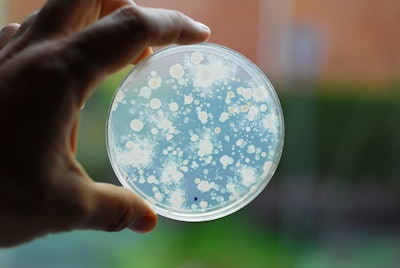
Researchers at the University of New South Wales have developed a type of DNA assay able to accurately identify and detect several serotypes of Salmonella, a common cause of food poisoning associated with eating raw or undercooked poultry and eggs.
The new test is faster and simpler to use than current testing methods, which could help food safety experts and public health investigators better trace the origin of infections when outbreaks occur.
"It is important to monitor and reduce Salmonella contamination at the start of the food chain to reduce human infections and outbreaks,” explained Ruiting Lan, PhD, of the School of Biotechnology and Biomolecular Sciences at the University of New South Wales.
“This new assay uses a different method known as multiple cross-displacement amplification (MCDA) to polymerase chain reaction (PCR). MCDA can detect very small amounts of DNA rapidly, and is also performed at a single constant temperature in contrast to the cycling of temperatures required in other methods such as PCR, making it a good fit for a simple, rapid, and sensitive bacterial detection test."
The MCDA assay can detect as few as 10 copies of DNA for each of the seven serovar (or strain)-specific targets of Salmonella, producing results in approximately 10 minutes. Unlike traditional methods, it doesn’t require bacteria to be grown in culture first, which saves time.
"The basic principle of MCDA is isothermal amplification using a polymerase that has strong strand-displacement activity (the ability to displace downstream DNA encountered during synthesis), DNA synthesis activity at a constant temperature around 60-65 oC (~140 oF) and a set of 10 primers covering 10 regions of the target, leading to highly specific exponential amplification of the target," Lan said.
Salmonella is gram-negative anaerobic bacterium that is responsible for approximately 1.35 million illnesses, 26,500 hospitalizations and 420 deaths in the U.S. each year, according to data from the Centers for Disease Control and Prevention (CDC). The bacteria has become increasingly multi-drug resistant, making it more difficult to treat.
The study appears in the Journal of Molecular Diagnostics.
Like what you just read? Sign up now for free to receive the Poultry Future Newsletter.


















